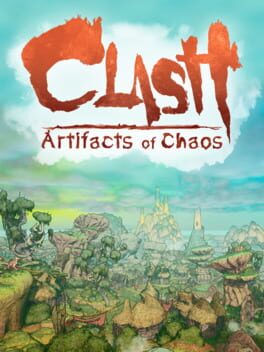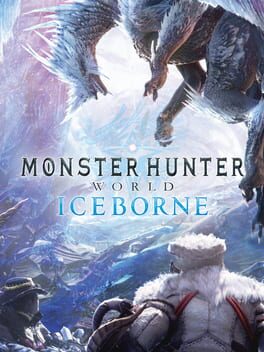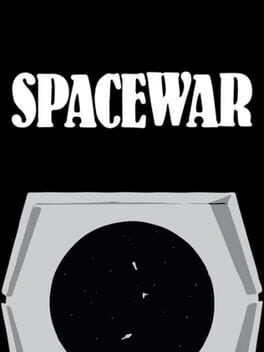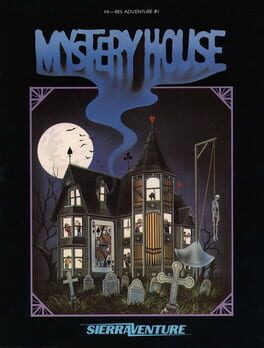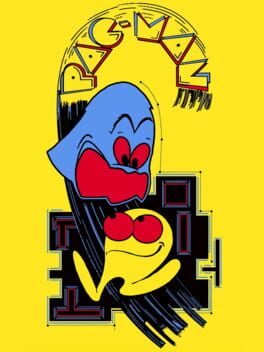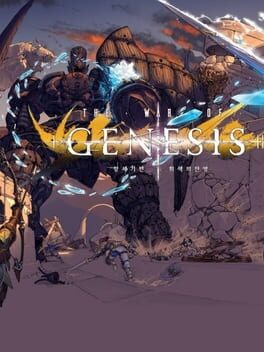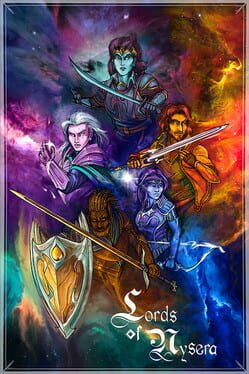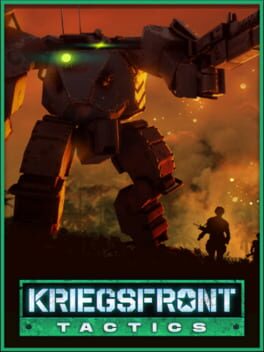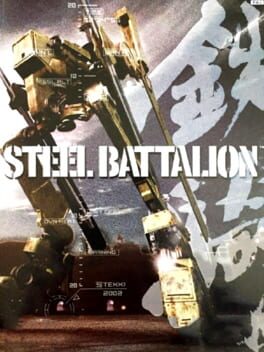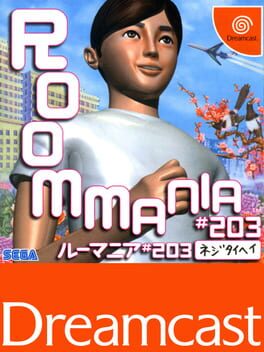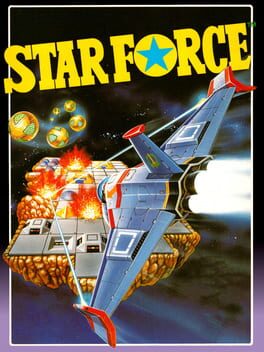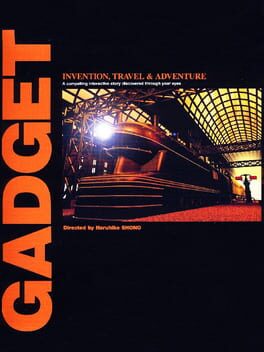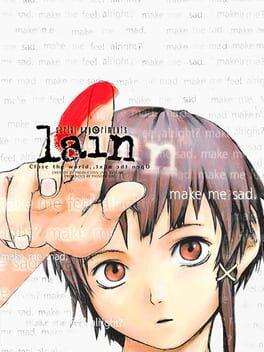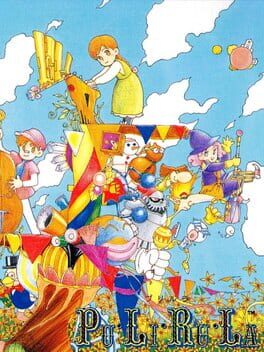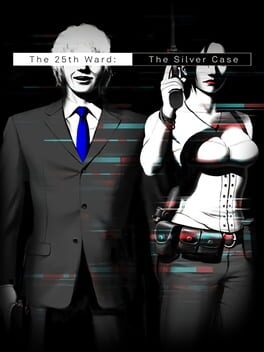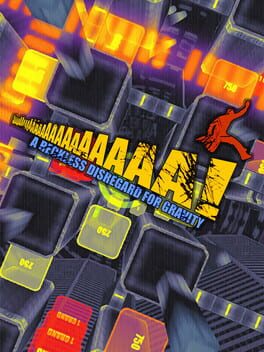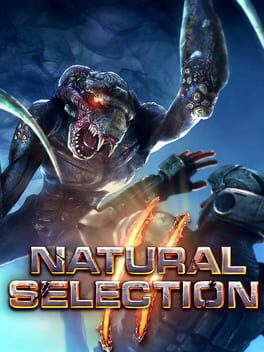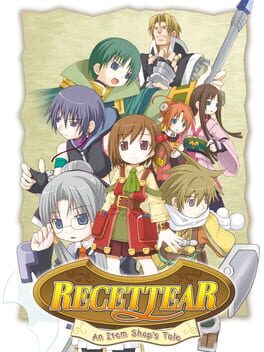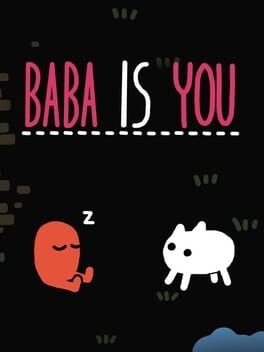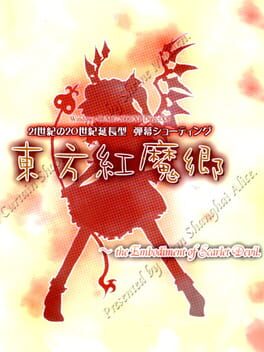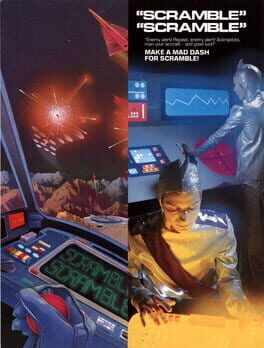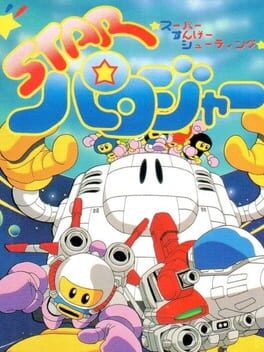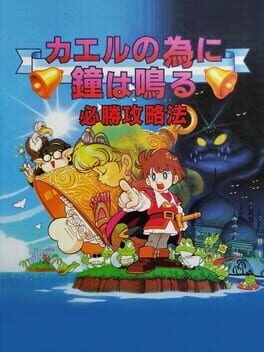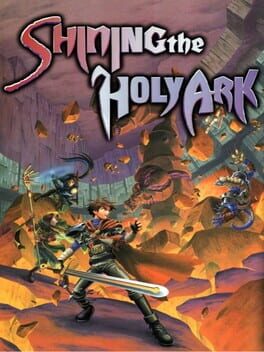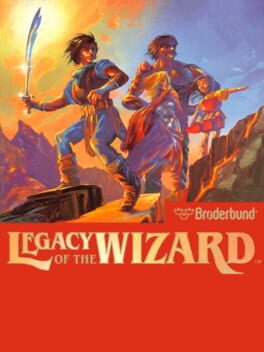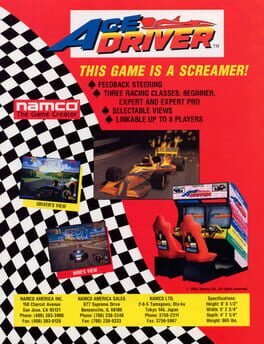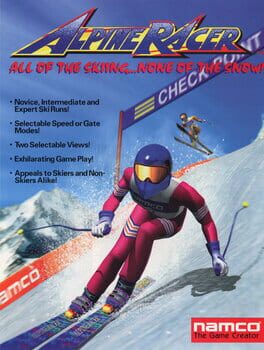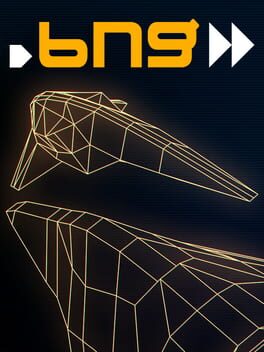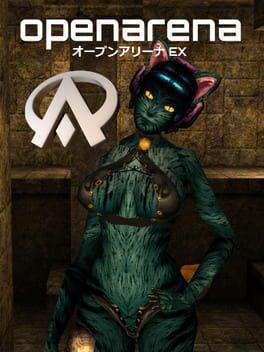DavidVideo
57 reviews liked by DavidVideo
Reports of the mid-budget game’s death have been greatly exaggerated. They’re generally now something you have to more actively be on the lookout for, but there are still plenty of them with all the same hallmarks cynics’d have you believe we don’t get anymore – navigation by way of unique geographical landmarks as opposed to UI widgets, obtuse systems you only learn the inner workings of by throwing yourself into the deep end, visual design and mechanics strange enough to ward off the easily disoriented and more. Few games in recent memory exemplify it all better than this.
While that clip works a rough vertical slice of what you can expect from Clash’s combat, its little nuances aren’t immediately obvious at a glance. The way its blocking system works feels especially distinctive from other action games with parries, temporarily slowing down the enemy you block almost like a localised version of Witch Time, but key to the balance it strikes between complexity and accessibility is how it lets you cancel any light punch at any point into one of a special attack, jump or dodge. It’s a narrow but malleable core which enables a bunch of playstyles simultaneously; you can help speed along Zenozoik’s death by manipulating these mechanics to absolutely wombo combo its denizens, be less committal and whittle them down while dodging away and luring them into each other’s attacks, focus on filling Pseudo’s attack gauge to spend as much time in his superpowered first person mode as possible or take any number of other approaches. Chuck in unlockable combat styles you can find through exploration (complementing its revamped, Bloodborne-inspired level design) alongside some light moveset customisation and you’ve got the type of game you’ll be reloading saves before boss encounters just to replay them differently, this all being before you get into modifiers brought about by the Ritual.
This is essentially an in-universe dice game that you can challenge bosses to before the fisticuffs start, during which the pair of you offer up an artifact to either somehow alter the fighting area, debuff one’s opponent or introduce some other advantage to one’s side depending on who has the most dice remaining by the end. The effects can get pretty creative, thick fog rolling in and obscuring your vision in exchange for causing enemies to swing blindly at whatever’s nearby being a suitably chaotic standout, though my favourite has to be the paired Pact and Summon artifacts. Winning the Ritual with the former active lets you store the boss you’ve beaten as an ally which you can then summon to help you by upon winning a second game with the latter equipped – if you stack up enough of both, you can essentially turn an unusual beat ‘em up into an even more unusual version of Pokemon, pitting cannibalistic mushroom men against tripedal bright blue elk with faces growing out of their chests and all manner of other weird and wonderful mercenaries I’ve no idea how these guys’ concept artists dreamt up. It does sometimes feel tedious that there’s no way to forfeit the Ritual once you’ve challenged someone to it, but it’s a worthwhile exchange for the sheer variation it enables in combat encounters. It’s everything I mentioned in the first paragraph dialled up to 11, fostered by an almost totally optional minigame. How cool is that?
I’m already predisposed to love any fictional world conceptually bizarre enough to feature something like this as its sole governing law, but it helps that it’s got the art direction to match. It’s one thing to be able to point your camera anywhere in a game and have a new wallpaper on your hands, another entirely both to craft such a genuinely alien environment and render it consistently readable without anything resembling objective markers. It’s perplexion with a purpose: it’d have been much easier to just let the player’s map or some other immersion breaking visual cue do all the thinking for them, but instead, the environmental artists and modellers gave it their all and went the extra mile to make this nutcase’s fever dream a believable place you’re expected to organically learn the lay of. Their creativity even benefits the enemy design in a way – certain opponents not having a particularly big or varied moveset is offset at least a bit by how you can never really be sure how something as uncanny as a technicolour lion with the face of an elderly man (for example) is going to attack. It easily joins hands with Bayonetta Origins and Inkulinati on the podium of some of 2023’s most unique visual design, none of which received any industry recognition in this regard because why would those with large platforms ever try to raise awareness of anything actually interesting?
How or why any given game flies under the radar varies too much to pin it on a singular cause, it’s just a particular shame that it’s happened in this case because of the extent to which Clash is stuffed with things people commonly claim to want. It might sound like a hodgepodge of disparate ideas when you’re just reading about it, but to me there are clear throughlines connecting all of its esoteric mechanics, outlandish art, intimidatingly loopy level design and litany of music I can’t do justice to with words – a willingness to be different and respect for the player’s intelligence. You can only put so much stock into how a game’s number of plays correlates to its actual popularity on a site where Gravity Rush 2 has more than Starcraft and Minecraft has only about three times as many as a Yakuza game, but only managing double digits even in a place of relative enthusiasts wouldn’t seem to bode well for its prospects (or, at least, as well as something with these traits deserves).
That’s why I challenge you, whoever’s reading this, by the One Law: please take a chance on this game you may have missed. They don’t make them like this anymore, except when they do! And when they do, you’ll be reminded of how much we could still do with more games like it.
While that clip works a rough vertical slice of what you can expect from Clash’s combat, its little nuances aren’t immediately obvious at a glance. The way its blocking system works feels especially distinctive from other action games with parries, temporarily slowing down the enemy you block almost like a localised version of Witch Time, but key to the balance it strikes between complexity and accessibility is how it lets you cancel any light punch at any point into one of a special attack, jump or dodge. It’s a narrow but malleable core which enables a bunch of playstyles simultaneously; you can help speed along Zenozoik’s death by manipulating these mechanics to absolutely wombo combo its denizens, be less committal and whittle them down while dodging away and luring them into each other’s attacks, focus on filling Pseudo’s attack gauge to spend as much time in his superpowered first person mode as possible or take any number of other approaches. Chuck in unlockable combat styles you can find through exploration (complementing its revamped, Bloodborne-inspired level design) alongside some light moveset customisation and you’ve got the type of game you’ll be reloading saves before boss encounters just to replay them differently, this all being before you get into modifiers brought about by the Ritual.
This is essentially an in-universe dice game that you can challenge bosses to before the fisticuffs start, during which the pair of you offer up an artifact to either somehow alter the fighting area, debuff one’s opponent or introduce some other advantage to one’s side depending on who has the most dice remaining by the end. The effects can get pretty creative, thick fog rolling in and obscuring your vision in exchange for causing enemies to swing blindly at whatever’s nearby being a suitably chaotic standout, though my favourite has to be the paired Pact and Summon artifacts. Winning the Ritual with the former active lets you store the boss you’ve beaten as an ally which you can then summon to help you by upon winning a second game with the latter equipped – if you stack up enough of both, you can essentially turn an unusual beat ‘em up into an even more unusual version of Pokemon, pitting cannibalistic mushroom men against tripedal bright blue elk with faces growing out of their chests and all manner of other weird and wonderful mercenaries I’ve no idea how these guys’ concept artists dreamt up. It does sometimes feel tedious that there’s no way to forfeit the Ritual once you’ve challenged someone to it, but it’s a worthwhile exchange for the sheer variation it enables in combat encounters. It’s everything I mentioned in the first paragraph dialled up to 11, fostered by an almost totally optional minigame. How cool is that?
I’m already predisposed to love any fictional world conceptually bizarre enough to feature something like this as its sole governing law, but it helps that it’s got the art direction to match. It’s one thing to be able to point your camera anywhere in a game and have a new wallpaper on your hands, another entirely both to craft such a genuinely alien environment and render it consistently readable without anything resembling objective markers. It’s perplexion with a purpose: it’d have been much easier to just let the player’s map or some other immersion breaking visual cue do all the thinking for them, but instead, the environmental artists and modellers gave it their all and went the extra mile to make this nutcase’s fever dream a believable place you’re expected to organically learn the lay of. Their creativity even benefits the enemy design in a way – certain opponents not having a particularly big or varied moveset is offset at least a bit by how you can never really be sure how something as uncanny as a technicolour lion with the face of an elderly man (for example) is going to attack. It easily joins hands with Bayonetta Origins and Inkulinati on the podium of some of 2023’s most unique visual design, none of which received any industry recognition in this regard because why would those with large platforms ever try to raise awareness of anything actually interesting?
How or why any given game flies under the radar varies too much to pin it on a singular cause, it’s just a particular shame that it’s happened in this case because of the extent to which Clash is stuffed with things people commonly claim to want. It might sound like a hodgepodge of disparate ideas when you’re just reading about it, but to me there are clear throughlines connecting all of its esoteric mechanics, outlandish art, intimidatingly loopy level design and litany of music I can’t do justice to with words – a willingness to be different and respect for the player’s intelligence. You can only put so much stock into how a game’s number of plays correlates to its actual popularity on a site where Gravity Rush 2 has more than Starcraft and Minecraft has only about three times as many as a Yakuza game, but only managing double digits even in a place of relative enthusiasts wouldn’t seem to bode well for its prospects (or, at least, as well as something with these traits deserves).
That’s why I challenge you, whoever’s reading this, by the One Law: please take a chance on this game you may have missed. They don’t make them like this anymore, except when they do! And when they do, you’ll be reminded of how much we could still do with more games like it.
(Logged as a shoe-in for both the base Monster Hunter: World game, and the Iceborne expansion.)
Lavish & deathly exciting at practically all times - varied and expressive social MMO tissue connecting its numerous multi-layered terrariums of gorgeous arenas and silly monsties.
I do have some background with the series, with much history on Freedom Unite, and far less with the fantranslation of Portable 3rd + 3Ultimate at various points through highschool, and hit the credits of Rise. Freedom Unite came packed with FMV cutscenes that demonstrate how the monsters lived in their downtime - characterising the monsters to assure the player that they weren't merely thoughtless models with movesets to memorise, but individual links in the food chain with roles that keep the world biodiverse & strong.
It was always my favourite part of the game, and what felt like the series' missing hook to really sell me on the core conceit was in how this aspect is somewhat downplayed or unexplored.
By God's grace this was the kind of ecological focus MH:W absolutely relishes in. An interlinking tapestry of ecosystems ticking away, living & interacting in countless ways to make the New World feel so gd raw. And it's not just pageantry either, it plays into behaviours and environment interactions from traps to turf wars. So so so good to head out for a simple hunt to watch it blossom into a scrappy mess of tooth & claw, so so so good to go on aimless expedition to a zone and notice a new handful of behaviours from their endemic life. I’d not be able to sleep at night if I didn’t compliment the chefs on all of this, every monster in every zone is given so much purpose it’s inspiring.
One thing this series has always been great at is its environment design - the world of Monster Hunter is a land of plenty, and everything is blown out of proportion to match. You're eating sirloin steaks the size of your head, oyster side dishes that can feed an army. The tooth you built your hammer out of can sink a ship. Zones and skyboxes that coil across different unique biomes rich in visual stimuli, adding heaps of context for the world and how things are as they are. Pan the camera up at any point and you can assuredly see a spire of choral, ice or crystal towering over you from what appears to be a mile away. Hoarfrost Reach is gorgeous I need to live there NOW.
Moment to moment combat is of course good as hell. I love that it’s slow and weighty enough to separate it from a more typical Capcom character action affair. Even with the amassing layers of QoL the series has glazed itself with, World still focuses on hefty player move commitment and punishment. Every weapon here feels great and each individually recontextualises your approach to any fight, but I found a home with the Dual Blades I’m afraid. I love these stupid ale blades man!!! Basically adored the progression right up until the Furious Rajang, where the game takes a very steep swerve into grind and Raid-like Design territory I find catatonic & diagnostic. The Fatalis fight is so much fun I wish I could solo it 😢
Lavish & deathly exciting at practically all times - varied and expressive social MMO tissue connecting its numerous multi-layered terrariums of gorgeous arenas and silly monsties.
I do have some background with the series, with much history on Freedom Unite, and far less with the fantranslation of Portable 3rd + 3Ultimate at various points through highschool, and hit the credits of Rise. Freedom Unite came packed with FMV cutscenes that demonstrate how the monsters lived in their downtime - characterising the monsters to assure the player that they weren't merely thoughtless models with movesets to memorise, but individual links in the food chain with roles that keep the world biodiverse & strong.
It was always my favourite part of the game, and what felt like the series' missing hook to really sell me on the core conceit was in how this aspect is somewhat downplayed or unexplored.
By God's grace this was the kind of ecological focus MH:W absolutely relishes in. An interlinking tapestry of ecosystems ticking away, living & interacting in countless ways to make the New World feel so gd raw. And it's not just pageantry either, it plays into behaviours and environment interactions from traps to turf wars. So so so good to head out for a simple hunt to watch it blossom into a scrappy mess of tooth & claw, so so so good to go on aimless expedition to a zone and notice a new handful of behaviours from their endemic life. I’d not be able to sleep at night if I didn’t compliment the chefs on all of this, every monster in every zone is given so much purpose it’s inspiring.
One thing this series has always been great at is its environment design - the world of Monster Hunter is a land of plenty, and everything is blown out of proportion to match. You're eating sirloin steaks the size of your head, oyster side dishes that can feed an army. The tooth you built your hammer out of can sink a ship. Zones and skyboxes that coil across different unique biomes rich in visual stimuli, adding heaps of context for the world and how things are as they are. Pan the camera up at any point and you can assuredly see a spire of choral, ice or crystal towering over you from what appears to be a mile away. Hoarfrost Reach is gorgeous I need to live there NOW.
Moment to moment combat is of course good as hell. I love that it’s slow and weighty enough to separate it from a more typical Capcom character action affair. Even with the amassing layers of QoL the series has glazed itself with, World still focuses on hefty player move commitment and punishment. Every weapon here feels great and each individually recontextualises your approach to any fight, but I found a home with the Dual Blades I’m afraid. I love these stupid ale blades man!!! Basically adored the progression right up until the Furious Rajang, where the game takes a very steep swerve into grind and Raid-like Design territory I find catatonic & diagnostic. The Fatalis fight is so much fun I wish I could solo it 😢
Alien Soldier
1995
this is a title that feels downright oppressive at first. your protagonist takes up an absolutely absurd amount of screen real estate; you have a wealth of complex techniques to master mapped to only three different buttons; there's six different weapons, not all of which are applicable in every scenario, and there are upwards of twenty different ways of representing your status and resources; the only available difficulties are SUPEREASY and SUPERHARD. this is unruly, frantic, and demanding, and you'll likely spend a fair amount of time dying repeatedly just to make heads or tails of the game because it shoves you right into the crossfire, before you might even be aware that the entire game is tantamount to a boss rush.
stick with it. conquer the game on SUPERHARD, no matter how arduous. it's the rare game that makes the most of every single mechanic on offer, where each design implementation is representative of an uncanny degree of fine-tuning and polish. i can point to any one detail in this game, no matter how consequential or intangible, and give you a sensible, informative, and well-articulated answer for why it was designed this way. doubtless the masters at treasure can, too. it's tooth-and-nail adrenaline-inducing frenzy condensed into an hour's run time
stick with it. conquer the game on SUPERHARD, no matter how arduous. it's the rare game that makes the most of every single mechanic on offer, where each design implementation is representative of an uncanny degree of fine-tuning and polish. i can point to any one detail in this game, no matter how consequential or intangible, and give you a sensible, informative, and well-articulated answer for why it was designed this way. doubtless the masters at treasure can, too. it's tooth-and-nail adrenaline-inducing frenzy condensed into an hour's run time
Pentiment
2022
It’s important that you treat Pentiment with the same scrutiny and scepticism that you (hopefully) do with any other historical source. Most media, not just videogames, are, politely put, atrocious at dealing in good faith with the settings and themes that Pentiment tackles, to the point where it’s probably reasonable to call it one of the most authentic games ever made in this regard. The flip side of this is that it makes the things Pentiment gets wrong feel more conspicuous than they would be otherwise.
If that last part has your guard up, you can safely lower it, because Pentiment’s small handful of inaccuracies are pretty minor in that they don't affect the plot overmuch. I won’t say what they are specifically, because this is the type of game where any and all details ought to be discovered yourself, but among other things, they include at least two cultural events which are unambiguously Christian being misattributed to Alpine paganism of some description, as well as one figure who was (to my knowledge) neither pre-Christian nor worshipped as a goddess being described as a pre-Christian goddess.
There are a couple of reasons why these don’t overly strain Pentiment’s believability and for which it deserves to be given the benefit of the doubt. For starters, relative to the vast majority of media set during the early modern period and (in this case, just after the) Middle Ages, Pentiment’s immensely tactful to the point where I'm (almost but not quite) inclined to think these kinds of mistakes were intentionally included, on the part of its characters rather than its writers; that it avoids the common error of misattributing the origins of Christian saints to pagan figures further suggests this. More broadly, it’s unreasonable to expect anything to be perfect in terms of accuracy and – on exceedingly rare occasions, in exceptionally talented hands – inaccuracies can be advantageous. Excalibur’s a more visually distinctive and symbolic film for featuring armour which is about 1000 years too advanced for the 5th/6th century AD. Shadow of Rome’s a more memorable game for making you fight a ~15ft tall Germanic barbarian whose weapon of choice is a marble pillar. Likewise, in a meta sort of way, Pentiment’s central idea of historiographical truth being difficult to pinpoint is arguably strengthened by its own shortcomings in this respect. Ideally, this’ll encourage players to be more wary of any historically-themed media they engage with, including Pentiment itself.
Any such grievances are further obscured by the mostly impressive weight Pentiment lends to your decisions. I had the fortune of playing through Pentiment concurrently with my brother, and when we’d walk in on each other playing it, we’d do mutual double takes as one of us was in the middle of story events that the other didn’t even consider would be possible. Speech checks being affected by past dialogue choices encourages you to constantly, properly pay attention to and think about what you’re saying in a way I personally haven’t seen done since the isometric Fallouts or Vampire the Masquerade Bloodlines. Although its time limits (while appreciated) aren’t implemented as organically as Fallout 1’s, an advantage Pentiment has over even those titans is that it also autosaves after every single action you take, lending everything a degree of permanence that few other RPGs can offer. If you were feeling particularly cheeky, you could go as far as to say that Pentiment can be counted alongside the campaign of Black Ops 2 in the pantheon of games which actually are what everyone pretends New Vegas is.
I call it only mostly impressive because Pentiment’s key weakness is the linearity of its third and final act, which even if you’re being charitable can only really be called overbearing. Not to bang on the choices-don’t-matter drum too hard, because nobody can ever seem to agree what choices mattering in a game really looks like, but you’re much more likely to wish you were able to say or do something other than the options you’re given in the last act than in the preceding two. Potential twists and turns you might hope to direct this chapter’s plot towards are often snuffed out by blurted out variations of “actually, I was only pretending to want to do that” that you rarely have any control over. This isn’t to suggest that Pentiment ends on a sour note – the ending itself’s quite lovely – but from a decision making standpoint, the whole last stretch’s noticeably more limiting.
However close it comes, this is never enough to distract from Pentiment’s visual splendour. Jan van Eyck paintings and The Tragedy of Man are the only other media I can think of which incorporate so many different historical art styles into one cohesive package and so skilfully. Sebhat being drawn in the style of Ethiopian Coptic Orthodox art’s a particularly inspired touch, but in general it’s no wonder that the art director and animators are the first names to pop up on the opening credits, because it’s like a playable manuscript. Rarely do you come across a game where you can legitimately say that the visuals are a selling point in and of themselves.
There should be more games like Pentiment. It represents two things we need more of – big developers putting out more niche, experimental titles, and historical media which isn’t riddled with self-congratulatory 21st century arrogance that spits on the memory of everyone who happened to be born before an arbitrary point in time, in which characters actually believe what they say and aren’t one-dimensional caricatures of the past. Be thankful it exists, whatever its issues.
If that last part has your guard up, you can safely lower it, because Pentiment’s small handful of inaccuracies are pretty minor in that they don't affect the plot overmuch. I won’t say what they are specifically, because this is the type of game where any and all details ought to be discovered yourself, but among other things, they include at least two cultural events which are unambiguously Christian being misattributed to Alpine paganism of some description, as well as one figure who was (to my knowledge) neither pre-Christian nor worshipped as a goddess being described as a pre-Christian goddess.
There are a couple of reasons why these don’t overly strain Pentiment’s believability and for which it deserves to be given the benefit of the doubt. For starters, relative to the vast majority of media set during the early modern period and (in this case, just after the) Middle Ages, Pentiment’s immensely tactful to the point where I'm (almost but not quite) inclined to think these kinds of mistakes were intentionally included, on the part of its characters rather than its writers; that it avoids the common error of misattributing the origins of Christian saints to pagan figures further suggests this. More broadly, it’s unreasonable to expect anything to be perfect in terms of accuracy and – on exceedingly rare occasions, in exceptionally talented hands – inaccuracies can be advantageous. Excalibur’s a more visually distinctive and symbolic film for featuring armour which is about 1000 years too advanced for the 5th/6th century AD. Shadow of Rome’s a more memorable game for making you fight a ~15ft tall Germanic barbarian whose weapon of choice is a marble pillar. Likewise, in a meta sort of way, Pentiment’s central idea of historiographical truth being difficult to pinpoint is arguably strengthened by its own shortcomings in this respect. Ideally, this’ll encourage players to be more wary of any historically-themed media they engage with, including Pentiment itself.
Any such grievances are further obscured by the mostly impressive weight Pentiment lends to your decisions. I had the fortune of playing through Pentiment concurrently with my brother, and when we’d walk in on each other playing it, we’d do mutual double takes as one of us was in the middle of story events that the other didn’t even consider would be possible. Speech checks being affected by past dialogue choices encourages you to constantly, properly pay attention to and think about what you’re saying in a way I personally haven’t seen done since the isometric Fallouts or Vampire the Masquerade Bloodlines. Although its time limits (while appreciated) aren’t implemented as organically as Fallout 1’s, an advantage Pentiment has over even those titans is that it also autosaves after every single action you take, lending everything a degree of permanence that few other RPGs can offer. If you were feeling particularly cheeky, you could go as far as to say that Pentiment can be counted alongside the campaign of Black Ops 2 in the pantheon of games which actually are what everyone pretends New Vegas is.
I call it only mostly impressive because Pentiment’s key weakness is the linearity of its third and final act, which even if you’re being charitable can only really be called overbearing. Not to bang on the choices-don’t-matter drum too hard, because nobody can ever seem to agree what choices mattering in a game really looks like, but you’re much more likely to wish you were able to say or do something other than the options you’re given in the last act than in the preceding two. Potential twists and turns you might hope to direct this chapter’s plot towards are often snuffed out by blurted out variations of “actually, I was only pretending to want to do that” that you rarely have any control over. This isn’t to suggest that Pentiment ends on a sour note – the ending itself’s quite lovely – but from a decision making standpoint, the whole last stretch’s noticeably more limiting.
However close it comes, this is never enough to distract from Pentiment’s visual splendour. Jan van Eyck paintings and The Tragedy of Man are the only other media I can think of which incorporate so many different historical art styles into one cohesive package and so skilfully. Sebhat being drawn in the style of Ethiopian Coptic Orthodox art’s a particularly inspired touch, but in general it’s no wonder that the art director and animators are the first names to pop up on the opening credits, because it’s like a playable manuscript. Rarely do you come across a game where you can legitimately say that the visuals are a selling point in and of themselves.
There should be more games like Pentiment. It represents two things we need more of – big developers putting out more niche, experimental titles, and historical media which isn’t riddled with self-congratulatory 21st century arrogance that spits on the memory of everyone who happened to be born before an arbitrary point in time, in which characters actually believe what they say and aren’t one-dimensional caricatures of the past. Be thankful it exists, whatever its issues.
Signalis
2022
A sapphic love letter - a daisy chain of vignettes that offer glimpses into other creative and influential media powerhouses, metered out by the task of juggling keys and receptacles in limited inventory slots across a vast steel complex. Too much mule work for its weight in silver in my humble. This search for lost love where ur body is weighed down by deprivations of liberty and soul rings so hollow to me when it's so clockable under a very narrow scope of media that strikes the same chimes so much better. More to the point I think I'm just too depressed to find any spark in this. Since I've been resorting to it recently, the flashes of self-harm imagery just piss me the fuck off.
Signalis a visual juggernaut that can dole out amazing one-two punches of sight and sound when it wants to, but the genre darling glazing is too sickly for my blood, I'd roll my eyes at practically every cutscene calling to something in the creators' Anilist Previously Watched stack. Not a classic survival horror head either, sorry not for me, not a problem in and of itself.
Signalis a visual juggernaut that can dole out amazing one-two punches of sight and sound when it wants to, but the genre darling glazing is too sickly for my blood, I'd roll my eyes at practically every cutscene calling to something in the creators' Anilist Previously Watched stack. Not a classic survival horror head either, sorry not for me, not a problem in and of itself.
God Hand
2006
Before there was Oblivion with guns, there was Resident Evil 4 without guns. More so than with respect to even its emphasis on crowd control, dynamic difficulty scaling or abundance of contextual carpal tunnel generators, God Hand’s arguably most reminiscent of its spiritual cousin in terms of how forward-thinking it is.
An action game likes convenience. To be able to jump in and fight what you want, when you want with as little fluff as possible’s part of why DMC’s Bloody Palace (or equivalents) became a genre mainstay, why Bayonetta 3’s revamped chapter select system is probably the single most underappreciated feature of 2022 and why the not-infrequent complaint about Nioh having a level select menu is so mystifying. Play enough games from when this family tree was still in its relative infancy and you’ll likely realise how easy it is to take such features for granted, which is why it's so cool that God Hand had something like the Fighting Ring so early on in the genre’s history.
A practice area coupled with all sorts of bespoke combat encounters you can tackle and/or fail any number of times, totally free of consequence, would be a natural fit for any action game, but it’s especially great for God Hand because of how its equipment system works. There’s not just a litany of attacks at your disposal, each with their own distinct properties and niches, but you can also equip any of them in any order and assign them to any button. It’s an unprecedented degree of customisation that might’ve otherwise been overwhelming without an area like this, and which I’m not sure’s been matched before or since. The likes of The Wonderful 101, God of War 3 and DMC5 might let me switch from one weapon to any other in any order, but not even they let me build a moveset out of pimp slaps if I feel like it, purely because I can.
The draw of experimentation that comes with this is hampered a bit by certain rough patches – for example, multi-hit attacks occasionally feel disincentivised in a way that doesn’t seem intentional because of how frequently enemies block and counterattack as the difficulty level increases (especially on Hard where you’re permanently at the highest), while low profile moves which dodge enemies’ high attacks for some reason don’t avoid jumping grabs – but what helps keep the combat malleable despite these is the counterhit system. Interrupt an enemy or boss’ attack with one of your own and they’ll varyingly flinch, be stunned, get juggled or launched, even if none of those properties work on them normally. It creates an engaging sense of back-and-forth and ensures you’re never completely strapped for options no matter how suffocating the situation you find yourself in or which moves you've equipped, especially when taken in tandem with being able to cancel any of Gene’s attacks at any point with one of three different dodges (which, provided your thumbs can remain intact, is also particularly helpful for circumventing the aforementioned issues with multihit attacks).
On that point, God Hand’s handling of defence is something more games could probably stand to learn from. The Great Sensei is a sink or swim moment in this respect and, in my view, the embodiment of what makes it shine, stringing together high attacks, vertical attacks and crowd control in blistering succession that demands you have an iron grip on each of Gene’s dodges and what they’re for like no boss before or after him. He would still be infamously difficult because of all this in a vacuum, but I think part of why he’s such a challenge also stems from how many other games with real-time combat systems treat their (often singular) dodge as a one-size-fits-all invincibility bubble and how tough it can be to break the conditioning that that sort of standardisation instils. Lost Judgment is another 3D beat-‘em-up which plays excellently, but despite being 15 years God Hand’s junior on platforms multitudes more powerful, it can’t help but feel comparatively primitive whenever Yagami “evades” a sweep kick by ducking his head. In contrast, God Hand’s more nuanced combination of side/backward dodges and bobbing & weaving reminded me loosely of Soulcalibur, which on top of its counterhit system makes one wonder how much other action games might benefit from leaning into their common ground with fighting games.
Not all of God Hand’s boss fights or enemies utilise its mechanics equally well, the final boss in particular running the risk of jettisoning the player’s goodwill into the bin, but some scattershot ups and downs are to be expected when your game is so bonkers at every turn. It speaks to how entertaining its stages manage to be, both conceptually and in design, that you end the game with no further mechanics than what you start with and it never once feels stale. There’s an inherent excitement that comes with cramming so many clowns, demons, cowboys, Venetian canals, floating pyramids and other seemingly disparate ideas that you don’t know what to expect next; while some might be surprised at the fact that he considers Resident Evil 4 to be the opposite, it’ll likely shock nobody that Shinji Mikami feels that God Hand is the game with the most amount of himself in it. What results is no doubt chaotic, but more than worth looking past the imperfections of for experiencing what’s essentially his and a bunch of other loveable goofballs’ collective personality transcribed onto a disc, which also happens to be perhaps the only game that feels like an interactive version of an action film’s fight choreography.
If you happen to still have a PS2 lying around, I can attest that the ~80 gamerbux that used copies of this bad boy go for are worth it. You may not be you know who, but you’ll feel like it by the end.
An action game likes convenience. To be able to jump in and fight what you want, when you want with as little fluff as possible’s part of why DMC’s Bloody Palace (or equivalents) became a genre mainstay, why Bayonetta 3’s revamped chapter select system is probably the single most underappreciated feature of 2022 and why the not-infrequent complaint about Nioh having a level select menu is so mystifying. Play enough games from when this family tree was still in its relative infancy and you’ll likely realise how easy it is to take such features for granted, which is why it's so cool that God Hand had something like the Fighting Ring so early on in the genre’s history.
A practice area coupled with all sorts of bespoke combat encounters you can tackle and/or fail any number of times, totally free of consequence, would be a natural fit for any action game, but it’s especially great for God Hand because of how its equipment system works. There’s not just a litany of attacks at your disposal, each with their own distinct properties and niches, but you can also equip any of them in any order and assign them to any button. It’s an unprecedented degree of customisation that might’ve otherwise been overwhelming without an area like this, and which I’m not sure’s been matched before or since. The likes of The Wonderful 101, God of War 3 and DMC5 might let me switch from one weapon to any other in any order, but not even they let me build a moveset out of pimp slaps if I feel like it, purely because I can.
The draw of experimentation that comes with this is hampered a bit by certain rough patches – for example, multi-hit attacks occasionally feel disincentivised in a way that doesn’t seem intentional because of how frequently enemies block and counterattack as the difficulty level increases (especially on Hard where you’re permanently at the highest), while low profile moves which dodge enemies’ high attacks for some reason don’t avoid jumping grabs – but what helps keep the combat malleable despite these is the counterhit system. Interrupt an enemy or boss’ attack with one of your own and they’ll varyingly flinch, be stunned, get juggled or launched, even if none of those properties work on them normally. It creates an engaging sense of back-and-forth and ensures you’re never completely strapped for options no matter how suffocating the situation you find yourself in or which moves you've equipped, especially when taken in tandem with being able to cancel any of Gene’s attacks at any point with one of three different dodges (which, provided your thumbs can remain intact, is also particularly helpful for circumventing the aforementioned issues with multihit attacks).
On that point, God Hand’s handling of defence is something more games could probably stand to learn from. The Great Sensei is a sink or swim moment in this respect and, in my view, the embodiment of what makes it shine, stringing together high attacks, vertical attacks and crowd control in blistering succession that demands you have an iron grip on each of Gene’s dodges and what they’re for like no boss before or after him. He would still be infamously difficult because of all this in a vacuum, but I think part of why he’s such a challenge also stems from how many other games with real-time combat systems treat their (often singular) dodge as a one-size-fits-all invincibility bubble and how tough it can be to break the conditioning that that sort of standardisation instils. Lost Judgment is another 3D beat-‘em-up which plays excellently, but despite being 15 years God Hand’s junior on platforms multitudes more powerful, it can’t help but feel comparatively primitive whenever Yagami “evades” a sweep kick by ducking his head. In contrast, God Hand’s more nuanced combination of side/backward dodges and bobbing & weaving reminded me loosely of Soulcalibur, which on top of its counterhit system makes one wonder how much other action games might benefit from leaning into their common ground with fighting games.
Not all of God Hand’s boss fights or enemies utilise its mechanics equally well, the final boss in particular running the risk of jettisoning the player’s goodwill into the bin, but some scattershot ups and downs are to be expected when your game is so bonkers at every turn. It speaks to how entertaining its stages manage to be, both conceptually and in design, that you end the game with no further mechanics than what you start with and it never once feels stale. There’s an inherent excitement that comes with cramming so many clowns, demons, cowboys, Venetian canals, floating pyramids and other seemingly disparate ideas that you don’t know what to expect next; while some might be surprised at the fact that he considers Resident Evil 4 to be the opposite, it’ll likely shock nobody that Shinji Mikami feels that God Hand is the game with the most amount of himself in it. What results is no doubt chaotic, but more than worth looking past the imperfections of for experiencing what’s essentially his and a bunch of other loveable goofballs’ collective personality transcribed onto a disc, which also happens to be perhaps the only game that feels like an interactive version of an action film’s fight choreography.
If you happen to still have a PS2 lying around, I can attest that the ~80 gamerbux that used copies of this bad boy go for are worth it. You may not be you know who, but you’ll feel like it by the end.
Hi-Fi Rush
2023
Miss a beat in Hi-fi Rush and Chai will attack on beat anyway. It’s probably unreasonable to expect it to punish this sort of thing in the same ways that other rhythm action hybrids like Patapon, Metal Hellsinger or Cadence of Hyrule do, because it’s so notable in part specifically for being so different from everything else, but there’s being different and then there’s being disincentivisingly handholdy. It’s a symptom of a larger problem – Hi-fi Rush seems almost afraid of allowing the player to fail.
With a scarce few exceptions like one of the final boss’ more belligerent attacks, the contrast between proper timing and mistiming in Hi-fi Rush isn’t success versus failure, it’s success versus negligibly less success. It’s true that enough mistimed attacks can detract from your final rank, but this is inconsistent with how assist attacks contribute to your score despite not requiring any timing at all (exacerbated by their charitable cooldowns), as does an offbeat jump if it ‘avoids’ an enemy’s attack that was nowhere near you anyhow, and the penalty’s so minor it’s hard to notice. Rhythm Master difficulty goes some way toward assuaging all this by giving you an immediate game over if your rhythm meter falls below C, but it’s not hugely impactful because of the aforementioned inconsistencies, while the fact that it’s only available after beating the game also makes the common action game mantra of “the first playthrough is the tutorial” feel unfortunately literal.
As another example of this, Hi-fi Rush affords the player a generous helping of attack magnetism, or whatever you prefer to call the melee equivalent of aim assist that’s particularly common in western action games. Chai’s mobility is so rigid that I imagine the designers may have felt the absence of this might’ve led to a frustrating amount of dropped combos. Even still, it’s at best unnecessary given that Chai already has an equivalent of Nero’s Snatch from DMC4 & 5, and at worst a net negative for how it diminishes positioning. It doesn’t stop Hi-fi Rush from getting better as you yourself do, like any other worthwhile action game, but being able to both feel and see the developers artificially nudging things in your favour like this does cheapen the appeal of getting to grips with what is, in the grand scheme of things, quite a cool combat system.
Apparent influences from other action games, like its equivalent of Astral Chain & Bayonetta 3’s wink attacks, lend themselves naturally to the combat’s rhythm-based formula and complement the game’s lovely presentation well. Environmental doodads bounce to the beat like in Metal Hellsinger, diegetically communicating helpful information to the player not only in terms of timing but also because enemies always attack to the beat, which ensures consistency on their part (albeit hampering their ability to surprise you). Another caveat to the combat’s strengths, though, is that there isn’t really enough of it, at least until you unlock Rhythm Tower i.e. the Bloody Palace analogue.
Most levels in Hi-fi Rush are very long by action game standards and a hefty proportion of nearly all of them consists of platforming segments. This sounds inoffensive in a vacuum, particularly for a genre in which “gimmick” seems to be a dirty word in most people’s minds, until the stiffness of Chai’s movement and the absence of a proper bossfight for two or three entire chapters in the game’s midsection make it apparent how drawn-out these sections often are. The latter feels especially deflating because the bosses that are here are of a really high standard, being diverse both visually and mechanically, with a huge amount of effort and artistry gone into even just the freezeframes in their introduction cutscenes. I’d much rather have had a couple more of them than be Letz Shaked twice in a row.
What makes it feel especially disappointing to be part of the internet’s propensity for contrarian armchair criticism, aside from the fact that Hi-fi Rush couldn’t be any more up my street conceptually, is that it isn’t a game that deserves to be ragged on like this. At the end of the day, this is a new IP in an historically niche genre that’s feature-complete out of the box, bereft of tonal carcinogens like irony or cynicism, stuffed with substantial post-game unlocks and has Korsica in it. It’s just also one which is eclipsed several times over in depth, variety, pacing and general well-consideredness by any number of other action games both modern and from the period it’s a love letter to, which don’t tend to lack for sincerity, charm or bonus content in the first place.
Is it funny, deserving of success and easy to recommend to anyone interested in action games despite this? Yup. Is it the best action game ever, as suggested by its average rating here (at the time of writing) and elsewhere? That's kind of wild. I’m potentially open to the idea that Hi-fi Rush is in the top seven or so best games that Masaaki Yamada has worked on.
More firmly, I’m genuinely delighted that Tango’s thrown its hat into the action game ring and that doing so’s rewarded its clearly, transparently talented staff with their most unambiguous success so far. I’d love even more to be able to speak of them in the same vein as Capcom or Platinum or Team Ninja who, barring one or two semi-recent and enormously overemphasised missteps apiece, have long comprised a reliable triumvirate of quality action experiences which light up my frontal lobe in a way few other developers can. How often I found myself smiling during Hi-fi Rush’s cutscenes and character interactions versus actually playing the game means that I can’t yet, but it’s still promising enough to be indicative of their potential to someday join them on stage as one of the action genre’s rockstars.
With a scarce few exceptions like one of the final boss’ more belligerent attacks, the contrast between proper timing and mistiming in Hi-fi Rush isn’t success versus failure, it’s success versus negligibly less success. It’s true that enough mistimed attacks can detract from your final rank, but this is inconsistent with how assist attacks contribute to your score despite not requiring any timing at all (exacerbated by their charitable cooldowns), as does an offbeat jump if it ‘avoids’ an enemy’s attack that was nowhere near you anyhow, and the penalty’s so minor it’s hard to notice. Rhythm Master difficulty goes some way toward assuaging all this by giving you an immediate game over if your rhythm meter falls below C, but it’s not hugely impactful because of the aforementioned inconsistencies, while the fact that it’s only available after beating the game also makes the common action game mantra of “the first playthrough is the tutorial” feel unfortunately literal.
As another example of this, Hi-fi Rush affords the player a generous helping of attack magnetism, or whatever you prefer to call the melee equivalent of aim assist that’s particularly common in western action games. Chai’s mobility is so rigid that I imagine the designers may have felt the absence of this might’ve led to a frustrating amount of dropped combos. Even still, it’s at best unnecessary given that Chai already has an equivalent of Nero’s Snatch from DMC4 & 5, and at worst a net negative for how it diminishes positioning. It doesn’t stop Hi-fi Rush from getting better as you yourself do, like any other worthwhile action game, but being able to both feel and see the developers artificially nudging things in your favour like this does cheapen the appeal of getting to grips with what is, in the grand scheme of things, quite a cool combat system.
Apparent influences from other action games, like its equivalent of Astral Chain & Bayonetta 3’s wink attacks, lend themselves naturally to the combat’s rhythm-based formula and complement the game’s lovely presentation well. Environmental doodads bounce to the beat like in Metal Hellsinger, diegetically communicating helpful information to the player not only in terms of timing but also because enemies always attack to the beat, which ensures consistency on their part (albeit hampering their ability to surprise you). Another caveat to the combat’s strengths, though, is that there isn’t really enough of it, at least until you unlock Rhythm Tower i.e. the Bloody Palace analogue.
Most levels in Hi-fi Rush are very long by action game standards and a hefty proportion of nearly all of them consists of platforming segments. This sounds inoffensive in a vacuum, particularly for a genre in which “gimmick” seems to be a dirty word in most people’s minds, until the stiffness of Chai’s movement and the absence of a proper bossfight for two or three entire chapters in the game’s midsection make it apparent how drawn-out these sections often are. The latter feels especially deflating because the bosses that are here are of a really high standard, being diverse both visually and mechanically, with a huge amount of effort and artistry gone into even just the freezeframes in their introduction cutscenes. I’d much rather have had a couple more of them than be Letz Shaked twice in a row.
What makes it feel especially disappointing to be part of the internet’s propensity for contrarian armchair criticism, aside from the fact that Hi-fi Rush couldn’t be any more up my street conceptually, is that it isn’t a game that deserves to be ragged on like this. At the end of the day, this is a new IP in an historically niche genre that’s feature-complete out of the box, bereft of tonal carcinogens like irony or cynicism, stuffed with substantial post-game unlocks and has Korsica in it. It’s just also one which is eclipsed several times over in depth, variety, pacing and general well-consideredness by any number of other action games both modern and from the period it’s a love letter to, which don’t tend to lack for sincerity, charm or bonus content in the first place.
Is it funny, deserving of success and easy to recommend to anyone interested in action games despite this? Yup. Is it the best action game ever, as suggested by its average rating here (at the time of writing) and elsewhere? That's kind of wild. I’m potentially open to the idea that Hi-fi Rush is in the top seven or so best games that Masaaki Yamada has worked on.
More firmly, I’m genuinely delighted that Tango’s thrown its hat into the action game ring and that doing so’s rewarded its clearly, transparently talented staff with their most unambiguous success so far. I’d love even more to be able to speak of them in the same vein as Capcom or Platinum or Team Ninja who, barring one or two semi-recent and enormously overemphasised missteps apiece, have long comprised a reliable triumvirate of quality action experiences which light up my frontal lobe in a way few other developers can. How often I found myself smiling during Hi-fi Rush’s cutscenes and character interactions versus actually playing the game means that I can’t yet, but it’s still promising enough to be indicative of their potential to someday join them on stage as one of the action genre’s rockstars.
God Hand
2006
Replay. Having played a handful of "beat them up" games between finishing God Hand for the first time and the second time, it's fun seeing so many of the ideas that God Hand homages. This review is just a note on some of those.
From Final Fight, there's a handful of enemy types—skinny knife throwers, agile women, plump guys, and the idea of tall and short enemies indicating their strength. There's also the "destroy a car" minigame, and in God Hand there's even throwbacks to that 90s style homophobia. From Streets of Rage, God Hand takes the whip enemies, and also the thing where enemies will sit on the ground and get pouty.
After finishing God Hand again, I started playing God Hand for a third time. It just feels amazing to play. The new game experience reminds me a lot of FromSoft in the level of skill (and level/enemy knowledge) you carry over, even though you don't carry over techniques you bought or health or "tension point" upgrades; probably the game I'd compare it to most is Sekiro. When I finished that game, I ended up speeding through the NG+ and didn't die until I got to the burning bull enemy, which was immensely satisfying. On the other hand, God Hand also feels like there's a lot of skill I have left to build. I started playing the hard mode and got my ass beat in the first level. I want to get there, but it is truly difficult.
From Final Fight, there's a handful of enemy types—skinny knife throwers, agile women, plump guys, and the idea of tall and short enemies indicating their strength. There's also the "destroy a car" minigame, and in God Hand there's even throwbacks to that 90s style homophobia. From Streets of Rage, God Hand takes the whip enemies, and also the thing where enemies will sit on the ground and get pouty.
After finishing God Hand again, I started playing God Hand for a third time. It just feels amazing to play. The new game experience reminds me a lot of FromSoft in the level of skill (and level/enemy knowledge) you carry over, even though you don't carry over techniques you bought or health or "tension point" upgrades; probably the game I'd compare it to most is Sekiro. When I finished that game, I ended up speeding through the NG+ and didn't die until I got to the burning bull enemy, which was immensely satisfying. On the other hand, God Hand also feels like there's a lot of skill I have left to build. I started playing the hard mode and got my ass beat in the first level. I want to get there, but it is truly difficult.
Castlevania
1986
Castlevania is a frustrating game, at times unfair, at times made me want to rip my hair out. I had a blast.
There is a lot that's been said about this games movement and how the clunkiness and delay makes for a more interesting, tactical game that you really need to really plan out your moves for. And yeah, that's accurate! It's fun! I'm beginning to really not buy the "games from this generation have aged poorly" shit because damn games like this show that people had really good ideas back then.
Also, I did abuse save states near the end. No, I don't feel bad.
There is a lot that's been said about this games movement and how the clunkiness and delay makes for a more interesting, tactical game that you really need to really plan out your moves for. And yeah, that's accurate! It's fun! I'm beginning to really not buy the "games from this generation have aged poorly" shit because damn games like this show that people had really good ideas back then.
Also, I did abuse save states near the end. No, I don't feel bad.
Resident Evil 4
2023
To me, the heart and soul of Resident Evil 4 is the combat, and that’s what this review is about. Everything else about the remake is something I can take or leave, but I have many issues with the gameplay and its design, and I’d like to talk about why because it feels like everything that the original did right has been forgotten by both the devs and the fans.
To be clear, I am okay with Resident Evil 4 Remake being a different game than the original. In fact, I would like it more if it was more different and tried to execute a new idea well. My issue with it is that I don’t think the remake succeeds at carving out its own niche gameplay-wise, and instead it feels like a mismade version of RE4 held up by band-aid fixes to try to maintain the illusion of being a decent action game, and I will try to explain why I feel this way.
A core pillar of RE4 is the tank controls, they are what adds nuance to even the simplest encounters in the game and everything is designed around the limitations brought on by them. The Remake inevitably takes out the tank controls and, because of that, much of the original design crumbles, the solution to which is to make an entirely new game around the modernized controls. However, they did not do that, they instead applied a bunch of reactionary changes trying to make the game feel functional and challenging despite the removal of its core design pillar.
To illustrate this, let’s talk about one of the basic enemy types of the game, the axe-thrower. An axe is thrown at you in the original RE4, the tank controls prevent you from easily sidestepping the issue. You need to either walk forward at an angle to dodge it which drastically influences your positioning and can move you towards the crowd of enemies, or you need to shoot the axe as it’s being thrown at you to stop it. Both of these options have quite a bit of nuance to them, as dodging with your movement requires you to turn in advance since Leon’s turn speed isn’t instant, meaning that a level of prediction and foresight is required to pull this off, and shooting the axe requires you to ready your weapon, get a read on the axe’s trajectory to aim at it, and expend ammo. These are not the only ways, but they serve as good enough examples.
Come to the remake and now you have a variety of options to dodge the axe that make it a non-threat compared to the original. You can sidestep it to get out of the way, you can block it with your knife by holding a button, and you can duck under it to dodge it without needing to move. All this stuff lets you get around it in ways that dont push you into interesting situations. These enemies however are still here in the remake and they act about the same, seemingly just because they were there in the original, not because they do anything interesting for the combat. This to me exemplifies a lot of the ways most of the enemies lost their purpose and "fun" since the mechanics that made them interesting to deal with are gone, and illustrates the value that the tank based controls brought to simple interactions. For some reason we have even more options that are even easier to use against an enemy that is already made ineffective by the core system changes.
So how does the game maintain any challenge? The devs tried to do so in a couple ways but I don’t think they make for a fun or nuanced game. For one, they made it so that all unarmed enemies have long, lunging grabs that require you to sprint away from for quite a while as they chase you. If they are already close, they perform instant grabs that can’t be dodged in any way. Enemies also can’t get stunned by your shots as consistently so that you can’t counter their aggression with your guns. In short, on the highest difficulties your best bet is always keep a safe distance from all unarmed enemies. Yes, I am aware that lunging grabs can be ducked, but grabs that begin at close range cannot be ducked, so your gameplan is ultimately still the same, be far from enemies to prevent unwinnable situations. The ability to duck far lunging grabs ultimately doesn’t change your decision making in any significant way.
Another big factor is that melee was nerfed and made extremely inconsistent, especially on the higher difficulties. Shooting an enemy in the head no longer guarantees a stun that gives you a melee prompt, and the kick itself has a much smaller hitbox and no lasting i-frames. While the kick being nerfed is something I can understand and play around with, the fact that it was also made unusable due to the RNG to trigger it is baffling to me. I am okay with it taking more than one headshot, but you can shoot an enemy 5 times in the head in professional and never get the stun. If the stuns were consistent to trigger through applicable rules, you would be able to pick an enemy in the crowd to get a stun on, lure enemies around them for crowd controls, or use the kick animation to i-frame through other attacks by planning ahead. But because of its inconsistency it's not a reliable strategy that allows you to play aggressive and risky with enemies. The melee stun is now essentially a random thing that the game “gives you”, similar to how you randomly get crits, and that change on its own removes half the appeal of RE4 for me, and I don't think the game compensates for it sufficiently.
Given what they did to melees, it’s quite funny that they still have enemies who wear helmets to stop you from headshotting them. In the original this mattered a lot since it meant you can’t headstun them to use them for crowd control and i-frames, and instead you had to go for knee shots which were less reliable and weren’t useful for dealing with a crowd. Yet the enemies in the remake still wear helmets as if it matters, but all it does is simply force you to shoot them in the body which only takes one/two more shots more than shooting the head. It’s another case of the enemy design losing what made it compelling due to short-sighted changes in mechanics and the devs failing to realize how much it would take away from the game.
The kind of gameplay these changes lead to is one of constant backpedaling, since your melee is no longer strong and reliable, and enemies have instant lunging grabs with no counterplay to them at close range, at higher difficulties the game devolves to simply running away from enemies and shooting. Sometimes you get lucky and get to do a melee, but it’s not a part of the plan. The plan is to make space, sprint away, and circle around the arena and shoot. If anything gets in your way, a quick shotgun shot can disable them. The game’s challenge is now simply asking you to run and use ammo. I don’t think this is a particularly compelling gameplay loop when the ammo management never feels difficult as long as you hit your shots due to the leniency provided by the dynamic difficulty ensuring you get the drops for the weapons you are low on ammo on. Even if the ammo management was super tight, what kind of gameplay would that lead to? Simply clumping up enemies into tight corridors so you can shotgun/rifle multiple of them at a time for ammo efficiency? Or doing the same gameplan except slower to get focus shots with your pistol? Or if you play for rankings, simply run past all the enemies and encounters. It’s not fun to pull off, it’s simply boring.
There is another aspect to the defense in this game which I haven’t mentioned yet and that is the knife but I think it only exacerbates the game’s issues. On the surface you can say the knife adds more flexibility to the gameplay and parry allows you to get melees consistently, which is true, but to me that undermines the appeal of the mechanics it’s meant to interact with. The knife allows you to parry the attacks of any armed enemy, which in a kind of backwards way makes all the armed enemies way less dangerous than unarmed ones and their undodgeable grabs. Being able to get a melee off of it consistently is a sad way to relegate the mechanic, since it prevents you from using it aggressively and making your own choices when it comes to who and and when you want to use melees on, instead its simply something that happens to you, you get to do parry into melee if the game pits you against armed enemies that allows you to circumvent anything that could be challenging about them with an easy timing challenge. Even when made a bit more challenging with enemies varying their attack timings on Pro mode, the parry doesn’t ever feed into the rest of the game’s systems as the knife durability cost is virtually nothing for doing it. All it does is simply give you a “Get Out Of Jail For Free” card when it comes to armed enemies since their attacks are a boon to you, and in a backwards way it makes them easier than unarmed enemies and their grabs.
This is probably one of the places where I have the most disconnect with this game because I really don’t get the fun of parries in a game like this. Dodging through positioning and making decisions by planning around enemy behavior is where I get fun from this kind of action game, but with an instant parry like in RE4 with the static and slow enemies of this game it does absolutely nothing for me. If it had a big durability cost then maybe it would be a justifiable decision where you trade the damage and utility of the knife to escape a bad situation, but instead you just know the timing and nullify the entire enemy’s presence. The coolness of the animation is not enough to make up for how damaging it is to the game design to put so much on a simple timing challenge.
Ultimately, a big realization I made about RE4 Remake compared to the original is that it’s a game where things simply happen to you, rather than a game where you can make things happen.
You do the melee prompt when the game graces with you a stun animation, it’s not something you can reliably control and make decisions around.
You use knives to finish off enemies when the game lets you do so against transforming enemies, but you can’t control when it pops up since it doesn’t appear on most enemies and it’s not like you have a way of identifying Plagas enemies and knocking them down in advance. Because of that, stabbing grounded enemies never feels like a decision, just a prompt that you obey since you have little reason not to unless you wasted your knives getting grabbed. If every enemy on the ground had a stab prompt then at least you would be thinking about which enemies you choose to not do it on to save your knife resources.
You aren’t meant to use the knife aggressively since it can’t stun well anymore and the wide swings do pitiful damage, but you are meant to use it to parry attacks when an armed enemy happens to get into your range. When you parry attacks, you always get the same melee as a reward, you don’t get to make the choice of using a knee stun melee or a head stun melee for different purposes. You have little control in this game and most of the gameplay loop is obeying on-screen instructions in-between kiting and shooting
Compare this to the original RE4, where your backwards movement is much slower than your forward movement, so playing aggressively is encouraged, and running away from something comes at the cost of losing vision to it. You can choose what enemy to shoot in order to stun them, you choose where to shoot them to make a choice between the roundhouse kick for great crowd control or the straight kick/suplex for better single target damage. You can weave around enemies, bait them into quick attacks that you can feasibly whiff punish with your knife to get a headstun and turn close quarters situations in your favor. Compared to this, constant running away and shooting at enemies in the remake feels shallow and boring. To make it clear I don’t think the remake is hard, the strategy you are pushed into is so effective and easy to execute its hard to be very difficult once you get a hang of it, but it’s not fun either, and even if they found a way to make it hard it would just be boring due to how limited the mechanics are and how little options the player has in actually influencing the way fights progress.
And that about sums up my issues with the game. I can’t think of a good way to tie it together other than that I am deeply disappointed by what this remake had to offer. The devs clearly don’t have experience in making action games, they want to make a survival horror game so badly with the way professional is designed but it’s just not a good survival horror game either. If this was a more horror and resource management oriented RE4, that would be cool, but I think it’s simply a shitty action game where you point and click at enemies in-between kiting them.
If it were not a remake of RE4 then I would just see this as a mediocre third person shooter that tries hard with the encounter design, which is better than we get most of the time, but this game was made off the incredibly strong foundation of RE4 and yet managed to miss just about everything that was fun about it to me.
That this could be viewed as a good remake and a refinement of the original feels very strange to me, but I guess I’m completely divorced from the way people view action games nowadays. I guess as long as it has good animation work and easy controls it’s good enough, but I want more than that out of these games and the industry isn’t interested in providing that anymore. Unfortunate that I grew up to care about this stuff.
Addendum:
Since people gaslight themselves with this game into thinking the stuns are consistent, here is evidence of them being inconsistent and unreliable where I can shoot an enemy to death without ever getting a stun:
https://streamable.com/fovauq
https://streamable.com/a6jcux
https://streamable.com/nmb8lz
https://streamable.com/08vazy
First two clips are on hardcore with a fully upgraded Red9, last two clips are at the start of Professional.
To be clear, I am okay with Resident Evil 4 Remake being a different game than the original. In fact, I would like it more if it was more different and tried to execute a new idea well. My issue with it is that I don’t think the remake succeeds at carving out its own niche gameplay-wise, and instead it feels like a mismade version of RE4 held up by band-aid fixes to try to maintain the illusion of being a decent action game, and I will try to explain why I feel this way.
A core pillar of RE4 is the tank controls, they are what adds nuance to even the simplest encounters in the game and everything is designed around the limitations brought on by them. The Remake inevitably takes out the tank controls and, because of that, much of the original design crumbles, the solution to which is to make an entirely new game around the modernized controls. However, they did not do that, they instead applied a bunch of reactionary changes trying to make the game feel functional and challenging despite the removal of its core design pillar.
To illustrate this, let’s talk about one of the basic enemy types of the game, the axe-thrower. An axe is thrown at you in the original RE4, the tank controls prevent you from easily sidestepping the issue. You need to either walk forward at an angle to dodge it which drastically influences your positioning and can move you towards the crowd of enemies, or you need to shoot the axe as it’s being thrown at you to stop it. Both of these options have quite a bit of nuance to them, as dodging with your movement requires you to turn in advance since Leon’s turn speed isn’t instant, meaning that a level of prediction and foresight is required to pull this off, and shooting the axe requires you to ready your weapon, get a read on the axe’s trajectory to aim at it, and expend ammo. These are not the only ways, but they serve as good enough examples.
Come to the remake and now you have a variety of options to dodge the axe that make it a non-threat compared to the original. You can sidestep it to get out of the way, you can block it with your knife by holding a button, and you can duck under it to dodge it without needing to move. All this stuff lets you get around it in ways that dont push you into interesting situations. These enemies however are still here in the remake and they act about the same, seemingly just because they were there in the original, not because they do anything interesting for the combat. This to me exemplifies a lot of the ways most of the enemies lost their purpose and "fun" since the mechanics that made them interesting to deal with are gone, and illustrates the value that the tank based controls brought to simple interactions. For some reason we have even more options that are even easier to use against an enemy that is already made ineffective by the core system changes.
So how does the game maintain any challenge? The devs tried to do so in a couple ways but I don’t think they make for a fun or nuanced game. For one, they made it so that all unarmed enemies have long, lunging grabs that require you to sprint away from for quite a while as they chase you. If they are already close, they perform instant grabs that can’t be dodged in any way. Enemies also can’t get stunned by your shots as consistently so that you can’t counter their aggression with your guns. In short, on the highest difficulties your best bet is always keep a safe distance from all unarmed enemies. Yes, I am aware that lunging grabs can be ducked, but grabs that begin at close range cannot be ducked, so your gameplan is ultimately still the same, be far from enemies to prevent unwinnable situations. The ability to duck far lunging grabs ultimately doesn’t change your decision making in any significant way.
Another big factor is that melee was nerfed and made extremely inconsistent, especially on the higher difficulties. Shooting an enemy in the head no longer guarantees a stun that gives you a melee prompt, and the kick itself has a much smaller hitbox and no lasting i-frames. While the kick being nerfed is something I can understand and play around with, the fact that it was also made unusable due to the RNG to trigger it is baffling to me. I am okay with it taking more than one headshot, but you can shoot an enemy 5 times in the head in professional and never get the stun. If the stuns were consistent to trigger through applicable rules, you would be able to pick an enemy in the crowd to get a stun on, lure enemies around them for crowd controls, or use the kick animation to i-frame through other attacks by planning ahead. But because of its inconsistency it's not a reliable strategy that allows you to play aggressive and risky with enemies. The melee stun is now essentially a random thing that the game “gives you”, similar to how you randomly get crits, and that change on its own removes half the appeal of RE4 for me, and I don't think the game compensates for it sufficiently.
Given what they did to melees, it’s quite funny that they still have enemies who wear helmets to stop you from headshotting them. In the original this mattered a lot since it meant you can’t headstun them to use them for crowd control and i-frames, and instead you had to go for knee shots which were less reliable and weren’t useful for dealing with a crowd. Yet the enemies in the remake still wear helmets as if it matters, but all it does is simply force you to shoot them in the body which only takes one/two more shots more than shooting the head. It’s another case of the enemy design losing what made it compelling due to short-sighted changes in mechanics and the devs failing to realize how much it would take away from the game.
The kind of gameplay these changes lead to is one of constant backpedaling, since your melee is no longer strong and reliable, and enemies have instant lunging grabs with no counterplay to them at close range, at higher difficulties the game devolves to simply running away from enemies and shooting. Sometimes you get lucky and get to do a melee, but it’s not a part of the plan. The plan is to make space, sprint away, and circle around the arena and shoot. If anything gets in your way, a quick shotgun shot can disable them. The game’s challenge is now simply asking you to run and use ammo. I don’t think this is a particularly compelling gameplay loop when the ammo management never feels difficult as long as you hit your shots due to the leniency provided by the dynamic difficulty ensuring you get the drops for the weapons you are low on ammo on. Even if the ammo management was super tight, what kind of gameplay would that lead to? Simply clumping up enemies into tight corridors so you can shotgun/rifle multiple of them at a time for ammo efficiency? Or doing the same gameplan except slower to get focus shots with your pistol? Or if you play for rankings, simply run past all the enemies and encounters. It’s not fun to pull off, it’s simply boring.
There is another aspect to the defense in this game which I haven’t mentioned yet and that is the knife but I think it only exacerbates the game’s issues. On the surface you can say the knife adds more flexibility to the gameplay and parry allows you to get melees consistently, which is true, but to me that undermines the appeal of the mechanics it’s meant to interact with. The knife allows you to parry the attacks of any armed enemy, which in a kind of backwards way makes all the armed enemies way less dangerous than unarmed ones and their undodgeable grabs. Being able to get a melee off of it consistently is a sad way to relegate the mechanic, since it prevents you from using it aggressively and making your own choices when it comes to who and and when you want to use melees on, instead its simply something that happens to you, you get to do parry into melee if the game pits you against armed enemies that allows you to circumvent anything that could be challenging about them with an easy timing challenge. Even when made a bit more challenging with enemies varying their attack timings on Pro mode, the parry doesn’t ever feed into the rest of the game’s systems as the knife durability cost is virtually nothing for doing it. All it does is simply give you a “Get Out Of Jail For Free” card when it comes to armed enemies since their attacks are a boon to you, and in a backwards way it makes them easier than unarmed enemies and their grabs.
This is probably one of the places where I have the most disconnect with this game because I really don’t get the fun of parries in a game like this. Dodging through positioning and making decisions by planning around enemy behavior is where I get fun from this kind of action game, but with an instant parry like in RE4 with the static and slow enemies of this game it does absolutely nothing for me. If it had a big durability cost then maybe it would be a justifiable decision where you trade the damage and utility of the knife to escape a bad situation, but instead you just know the timing and nullify the entire enemy’s presence. The coolness of the animation is not enough to make up for how damaging it is to the game design to put so much on a simple timing challenge.
Ultimately, a big realization I made about RE4 Remake compared to the original is that it’s a game where things simply happen to you, rather than a game where you can make things happen.
You do the melee prompt when the game graces with you a stun animation, it’s not something you can reliably control and make decisions around.
You use knives to finish off enemies when the game lets you do so against transforming enemies, but you can’t control when it pops up since it doesn’t appear on most enemies and it’s not like you have a way of identifying Plagas enemies and knocking them down in advance. Because of that, stabbing grounded enemies never feels like a decision, just a prompt that you obey since you have little reason not to unless you wasted your knives getting grabbed. If every enemy on the ground had a stab prompt then at least you would be thinking about which enemies you choose to not do it on to save your knife resources.
You aren’t meant to use the knife aggressively since it can’t stun well anymore and the wide swings do pitiful damage, but you are meant to use it to parry attacks when an armed enemy happens to get into your range. When you parry attacks, you always get the same melee as a reward, you don’t get to make the choice of using a knee stun melee or a head stun melee for different purposes. You have little control in this game and most of the gameplay loop is obeying on-screen instructions in-between kiting and shooting
Compare this to the original RE4, where your backwards movement is much slower than your forward movement, so playing aggressively is encouraged, and running away from something comes at the cost of losing vision to it. You can choose what enemy to shoot in order to stun them, you choose where to shoot them to make a choice between the roundhouse kick for great crowd control or the straight kick/suplex for better single target damage. You can weave around enemies, bait them into quick attacks that you can feasibly whiff punish with your knife to get a headstun and turn close quarters situations in your favor. Compared to this, constant running away and shooting at enemies in the remake feels shallow and boring. To make it clear I don’t think the remake is hard, the strategy you are pushed into is so effective and easy to execute its hard to be very difficult once you get a hang of it, but it’s not fun either, and even if they found a way to make it hard it would just be boring due to how limited the mechanics are and how little options the player has in actually influencing the way fights progress.
And that about sums up my issues with the game. I can’t think of a good way to tie it together other than that I am deeply disappointed by what this remake had to offer. The devs clearly don’t have experience in making action games, they want to make a survival horror game so badly with the way professional is designed but it’s just not a good survival horror game either. If this was a more horror and resource management oriented RE4, that would be cool, but I think it’s simply a shitty action game where you point and click at enemies in-between kiting them.
If it were not a remake of RE4 then I would just see this as a mediocre third person shooter that tries hard with the encounter design, which is better than we get most of the time, but this game was made off the incredibly strong foundation of RE4 and yet managed to miss just about everything that was fun about it to me.
That this could be viewed as a good remake and a refinement of the original feels very strange to me, but I guess I’m completely divorced from the way people view action games nowadays. I guess as long as it has good animation work and easy controls it’s good enough, but I want more than that out of these games and the industry isn’t interested in providing that anymore. Unfortunate that I grew up to care about this stuff.
Addendum:
Since people gaslight themselves with this game into thinking the stuns are consistent, here is evidence of them being inconsistent and unreliable where I can shoot an enemy to death without ever getting a stun:
https://streamable.com/fovauq
https://streamable.com/a6jcux
https://streamable.com/nmb8lz
https://streamable.com/08vazy
First two clips are on hardcore with a fully upgraded Red9, last two clips are at the start of Professional.
16 lists liked by DavidVideo
by umezono |
967 Games
by Detectivefail |
46 Games
by Neverwhere |
380 Games
by Hypnomad |
817 Games
by turdl3 |
71 Games
by killb |
22 Games
by GutterTrash |
48 Games
by zn0 |
66 Games
by Vee |
55 Games
by goob |
100 Games
